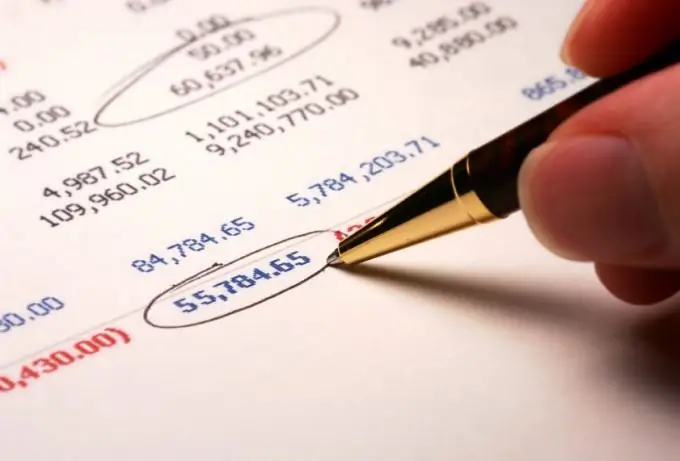- Author Isaiah Gimson [email protected].
- Public 2023-12-17 02:53.
- Last modified 2025-01-24 12:06.
The report of the enterprise for the selected period of time - month, quarter, year - is the balance sheet (form 1). It is also the main document that displays the financial condition of the organization at the end of the reporting period.

Instructions
Step 1
All possible controversial issues on the conduct of business and reporting in the organization, write down in the accounting policy. If the balance is drawn up for the tax period (for the year), then take an inventory of the property and liabilities of the organization. If there is a discrepancy between any data of analytical and synthetic accounts, draw up explanatory notes and amend the balance, that is, make a reformation.
Step 2
To draw up the balance sheet, it is necessary, according to the accounting policy adopted by the organization, to process analytical and synthetic accounts. The data for the accounts is collected from primary documents collected in chronological order for the reporting period. Movements and account balances are transferred to the general ledger.
Step 3
According to the results (balance) from the general ledger, you should collect data on active and passive accounts, group them by items and draw up a balance sheet.
Step 4
When filling out the lines of Form 1 (balance sheet), follow PBU 4/99. The balance is drawn up in thousands or millions of rubles (order of the Ministry of Finance of the Russian Federation dated July 22, 2003 67n, clause 7). The rules for rounding numbers when drawing up a balance sheet should be specified in advance in the accounting policy of the enterprise.
Step 5
In the lines for which data is missing, put dashes. The amount of uncovered loss is placed in parentheses, and not with a minus sign.
Step 6
Do not forget that the data at the beginning and the end of the reporting period must be comparable. If there have been changes in legislation or in your accounting policy, draw up an explanatory note, based on it, correct the data and enter it into the balance; the previous balance does not change.
Step 7
The sum of the lines in the first part of the balance sheet is an asset, which is always equal to the second part of the balance sheet - a liability. Also, according to the asset, the liquidity of the enterprise is judged, and the liabilities reflect the sources of the formation of the asset, the accounts payable of the enterprise and the financial result.






